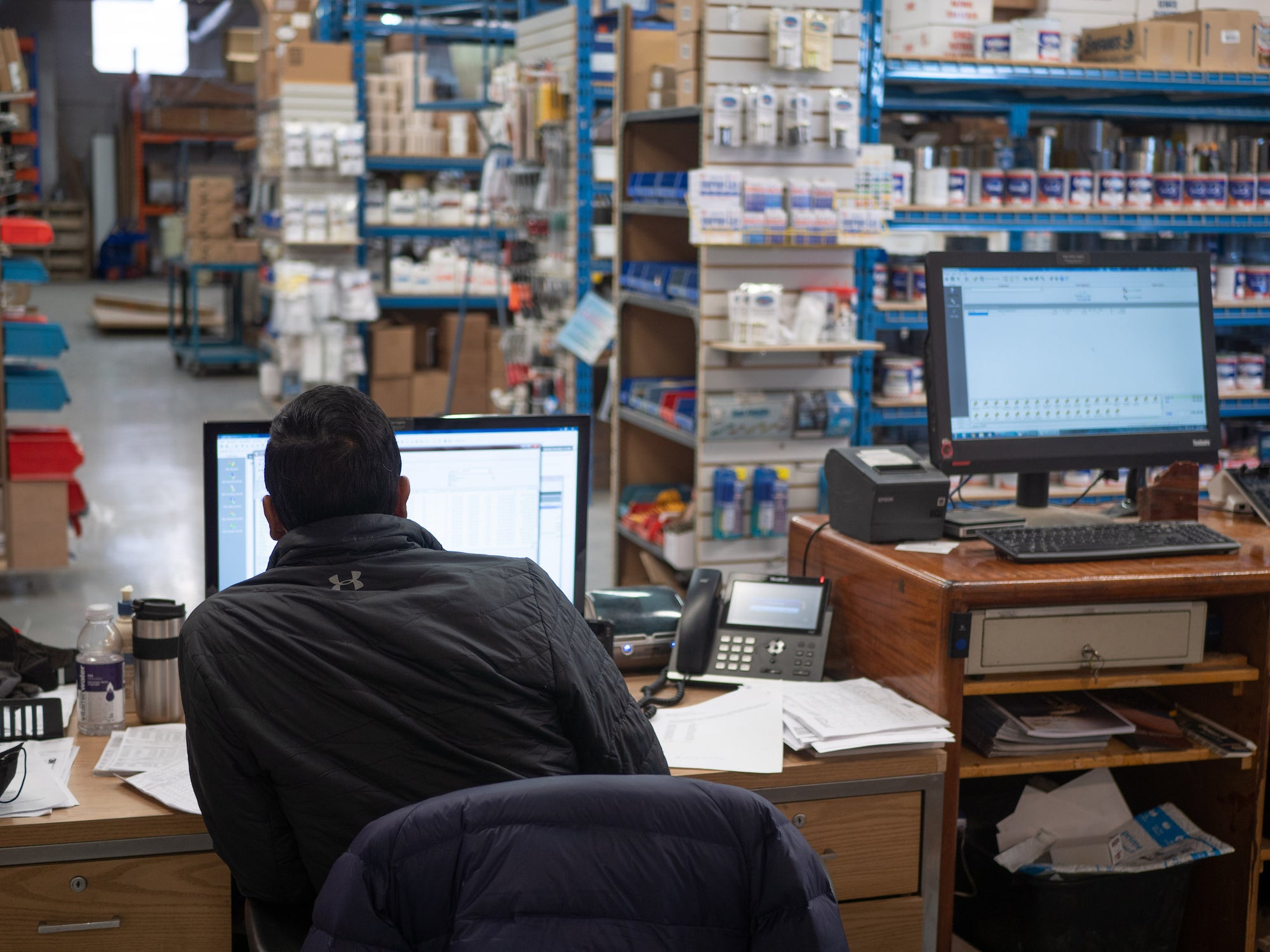ARK EPOXY APPLICATION
Mixing ratio by volume 2:1
MIXING: Mix 2 parts Ark Epoxy Resin with 1 part Ark Hardener. Use graduated containers or pumps to measure. Don’t guess! too much or too little hardener will affect the proper cure. Mix thoroughly, scraping the sides and the bottom of the container. Add fillers if desired, and spread with a solvent-resistant Brush, Roller, or Squeegee.
RECOATING: Recoat with ARK Epoxy as soon as the previous coat is tacky, between 2 to 6 hours depending on Hardener and Temperature. After 8 hours, or when the epoxy has cured, hard sand with 80 grit paper before applying more epoxy or other coatings.
POT LIFE: The time before mixed Epoxy will start to thicken if left in the mixing container. Getting the mixture out of the mixing pot and onto the work surface or into a container with a larger surface area as soon as possible will extend the working time.
WORKING (GEL) TIME: The time you have to work with the mixed Epoxy when spreading out the mixture as a coating or with fiberglass before it starts to thicken. Pot Life, Gel, and sanding time will vary depending on temperature, mixed volume, time in the mixing container, and laminate thickness. Pot life and cure time will roughly double for an 8C drop in temperature, and ½ for an 8C rise.
| HARDENER | MIXED RATIO WEIGHT | POTLIFE 22C°/71F° | WORKING GEL TIME | Sandable | POTLIFE 12C°/54F° | SAND | FULL CURE |
|---|---|---|---|---|---|---|---|
| FAST |
100:43 |
8 -10 MIN |
15 -20 MIN |
6 -8 HRS |
15 – 20 MIN |
10– 14 HR |
5 DAYS |
| MEDIUM |
100:43 |
10-15 MIN |
20 – 40 MIN |
8 – 12 HRS |
20 – 30 MIN |
12 – 20 HR |
7 DAYS |
| SLOW |
100:43 |
20-30 MIN |
30 -60 MIN |
15– 24 HRS |
35 – 40 MIN |
24 - 48 HR |
10 DAYS |
SURFACE PREP: All surfaces must be clean, dry, and free of oil, wax, or paint. Sand cured epoxy, fiberglass, metal, and plastics.
WATERPROOF COATING: Roll or brush a thin coat of mixed epoxy, and apply a second coat after the first has begun to tack up (between 2 to 6 hours). If epoxy is allowed to cure hard (6 to 10 hr) it must be sanded or the next coat will not bond properly.
GLUE: Spread a coat of mixed epoxy on both surfaces, clamp until the glue just starts to squeeze out, do not let the glue spill over the clamp. Thickening with Arkfill, Colloidal Silica, or Cotton fiber will help prevent runout and make a good gap filler for uneven surfaces.
CASTING RESIN: ARK epoxy is water clear and can be used as a casting resin up to 1” thick per pour, using a SLOW hardener. ARK pigment, metal flake, fabric, powder, and virtually anything dry can be added to ARK epoxy. Avoid liquids, particularly oil-based.
PIGMENTING: Add a maximum of 5% ARK Pigment to ARK Epoxy. Do not use oil-based stains either into or under ARK Epoxy. Use Mohawk Ultra Stain on bare wood. To maintain color consistency through multiple pours, add a maximum of 8% pigment to Resin only, and mix in hardener at 2:1 ratio as needed.
BODY FILLER: Add wood flour, 3M Bubbles, or Micro Balloon to mixed epoxy to make a sandable fairing compound.
STRUCTURAL/ GAP FILLER: Add Arkfill or cotton/glass fiber with about 25% Colloidal Silica.
FIBERGLASSING: For lightweight (6oz) cloth on Canoes/Small boats etc. Lay the cloth on dry and spread carefully with your hands, do not pull. Starting from the center and working to the ends, roll or brush enough epoxy to saturate the cloth, working out wrinkles with a brush, spreader, or gloved hands as you go. Use a plastic spreader to remove excess resin or you will get runs. Apply a second and third coat as soon as the previous coat has gelled (between 2 to 6 hours). Sand the next day or when hard, and allow 7 days for full cure before painting or varnishing.
For heavier fiberglass (12/18 oz knitted) roll a coat of epoxy where you are placing the material. Lay the glass over the resin and use a spreader to work the resin up through the glass, add more resin as needed to wet it out completely. A mat roller will help break up the fibers and archive better wet out. For multiple layers put the next piece over the previous immediately, before the first layer starts to gel. For a smoother finish that requires minimal sanding, squeegee Peel Ply over the final coat of Epoxy before it starts to set, then pull off when the Epoxy has cured.
PREP FIBERGLASS: Use Acetone and a clean cotton cloth to remove wax or oil. For lightweight fiberglass for example on small boats, ATVs, etc use a sander with course (40 grit) paper to remove gelcoat or paint for at least 2” around the damaged area. Continue sanding until all damaged fiberglass has been removed. Delimitation shows up as white patches, remove this as well. A mini grinder with a course resin fiber disk will work faster on heavier glass but is more aggressive.
PREP METAL: Use Acetone and a clean cotton cloth to remove wax or oil. Sand to remove paint, rust, and other coatings. Surfaces should be clean and dry for Epoxy to adhere properly. Sandblast metal hulls and large surfaces.
PREP PLASTICS: Epoxy will adhere well to most hard plastics such as PVC and ABS plumbing pipe, just sand with coarse paper to remove the shiny surface.
POLYETHYLENE PLASTIC: Most Kayaks are made with Polyethylene, for this and other waxy plastics “flaming” will improve adhesion. Use a Propane torch with a flame spreader or heat gun to heat the plastic surface just to the point where it starts to shine. Keep the tip of the flame 3” or 4” off of the surface waving it slowly back and forth, don’t rush it. Overheating will cause severe damage. Allow it to cool for a few minutes, and apply Ark Epoxy with filler or fiberglass.
FIBERGLASS PATCHES: Fibreglass will not cover open gaps, so holes will have to be backstopped. If you can get to the backside of the damaged area, cover the gap with 3 or 4 layers of masking tape, plywood, or cardboard for large holes. If you can’t get at the inside cut a piece of heavy cardboard or plastic (Yogurt container tops work well) so it will just fit through the widest part of the hole. Put a piece of string or wire through the center of this piece; tie a knot on the back. Push the backstop through the gap, pull against the inside surface, tie off the string, and use double-sided tape or 5-minute epoxy to hold it in place.
Use scissors to cut the first piece of fiberglass so it just covers the sanded area, cut subsequent pieces slightly smaller so you can avoid a bump around the outside edge. Fiberglass bodies on most ATVs and PWCs are about 1/8” 3mm thick, 3 layers of glass will fill back to the original thickness. For thicker fiberglass just add more layers.
You can mask the area around the repair to avoid drips and runs on the surrounding area but the masking should be removed as soon as the resin begins to gel.
Brush a thin layer of the catalyzed resin on the sanded area. Place the largest piece of fiberglass over the wet resin, and use a brush to work the glass into the resin. Add just enough resin to wet out the first piece of fiberglass, apply the next piece over the first, add more resin as necessary, and repeat until you have used all the fiberglass material. A plastic spreader, or over the limit credit card, can be used to smooth the wet glass and remove excess resin.
TIPS: Do not use any more resin than is necessary to make the fiberglass go transparent, excess resin will just run out. The resin will take a minute or so to saturate the glass so be patient. See the chart above for Pot life, pour the mixed resin into a paint tray or other flat surface to extend pot life. If it starts to get warm discard and mix a fresh batch. Avoid working in rain or direct sunlight. Cured Epoxy will chalk over time if exposed to the sun, so cover with Spar Varnish or paint.
FILLING AND FINISHING: The patch should cure hard in about 8 hours. Sand smooth and flush to the surrounding area with 80 grit paper. Low areas can be filled by adding micro balloons to a small amount of mixed Epoxy until you get thick putty, apply with a spreader. For small amounts of filler, almost any dry powder can be added to the resin, such as fiberglass, wood sanding dust, baking flower, etc.
Gelcoat does not adhere well to Epoxy and may pop off if the subsurface flexes, but is usually sufficient for small areas. Sand with 80 grit paper for mechanical grip, wipe with Acetone before applying Gelcoat. Two-part polyurethane paint works best over Epoxy, but Alkyd Enamel or Aerosol Sprays are good alternatives. Allow the epoxy to cure for at least 7 days, sand the repair area with fine paper and wipe with acetone before overcoating.

